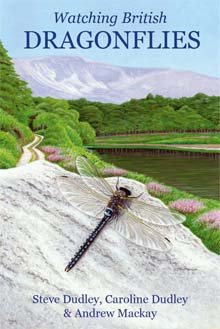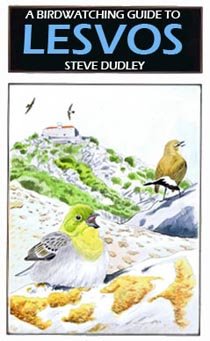Day nine of my Shetland & Orkney trip for Speyside Wildlife with fellow guide Ray Nowicki.
Guests: Liz, Chris, Joan, June, Daphne & David , Mary & John, Margaret & Terry.
Rain! It's the first morning we've woken to a crying sky, and with it howling wind. Mary is the latest member of the group to be stricken with the lurgy, so after breakfast Steve runs her into Stromness for some cold remedies.
Today is a real archaeology day, with as many birds as we can find slotted in between the sites.
Our first stop is within spitting distance of the hotel and is from this site that the hotel draws its name. The Stones of Stenness are around 5000 years old and four of the original 12 stones still encircle a square hearth. This small henge whets our appetite for the major monument we are to visit later.
Maesehowe is next. As we wait for our guide, we admire the tranquil setting, looking across grass and barley fields to the nearby lochs, an Arctic Skua drifts over us and a couple of Linnets bounce around noisily.
We enter the tomb by stooping along the long, low passageway. The tomb itself is large and high and is simply staggering. In each corner stands a 'mini' standing stone around which the walls are built. Three chambers lead off the main tomb, and the weight of some of the slabs which form the roofs of these chambers are immense - over 15 tonnes! The tomb has a history of being broken into, and there is no knowledge of what happened to the burial remains from the tomb - this has been lost to time.
The tomb has other secrets to reveal, though. Around the tomb is the graffiti of Norsk raiders. Writing in runes, they reveal their lives and wit of their age. We are told about how on during the winter solstice, the sun sets between the two great hills of Hoy, and aligned directly in the suns path is the nearby Barnhouse Stone, over which the suns rays pass and lead directly up the passageway and rests on the back wall of the tomb. Wow! Now that must be something to experience, and thanks to the wonders of modern technology we all can from the comfort of our own homes this winter - live on the web!
After some considerable retail therapy (well, they have such a good selection of books!), we head off to the Ring of Brodgar. Pulling up in the car park, Ray spies a young Linnet sat on the roof of the car next to him! Quite bizarre.
We enter the ring and walk round this impressive, huge stone circle. Only 36 of the 60 original stones remain standing. Each stone was set 6 degrees from its neighbours in a perfect circle surrounded by a 9m wide ditch. It's huge! The stones themselves can rise over 3m from the ground and are immense when stood alongside them. Its quite crowed during the day time, so Steve promises a less crowded visit for those interested that night to experience the sunset at the circle.
We head north-west and at the Loch of Skaill we find a good selection of duck including the trips first Pochard and quite a lot of Goldeneye sat amongst the Tufted Duck.
We are at Skara Brae, and after talking to the centre staff, decide we just have time for coffee (and cake!) before we visit the site before the arrival of the afternoon coach parties. Good move!
In the replica house, Steve gives the group a brief introduction to the house of man living here around 5000 years ago. And what a house! Directly opposite the entrance is an impressive and dominating, two-tier dresser where the family would have placed their most treasured possessions. The hearth was set in the floor in the middle of the room, around which seating stones were arranged, including the 'master' seat in front of the dresser, facing the entrance for the head of the house.
Around the edges of the room are the sleeping compartments. Stone slabs set up right in the ground defined the separate sleeping areas for each member of house. Little chambers in the walls, including one for each sleeping cell, would have been used for storage, and the three water-filled 'baskets' set in to the ground, made from stone and clay, would have been used for soaking limpets for fishing bait and possibly as a means of keeping some items cold.
Everyone is knocked out with the site itself. No one expected man to be so advanced as they were 5000 years ago, with their intricate houses and building.
And what a move it was to get in before the coaches. As we are leaving the settlement, a constant procession of people is filing in - hundreds of them! Most pay a visit to Skaill House before we join up again for lunch in the car park spread out on one of the grassy areas (sheltered from the wind by the minibus!).
After lunch we revert to birds and head for The Loons RSPB reserve and spend an hour in the new hide. The pools right in front of us hold Coot (including lots of young) and Moorhen, and several Sedge Warblers are seen banging around the reed fringe opposite. On the water a group of young Black-headed Gulls beg constantly to their parents who seem to be taking not a blind bit of notice! There are Curlews and Lapwings in all directions, lifting occasionally, sometimes a ghost, other times reacting to a passing Bonxie (well wouldn't you!). The odd Teal wings its way across marshes.
Over to our left there is a constant mobbing. The Common Gulls seem to have taken a disliking to something which by the looks is sat on the ground. The gulls mob it constantly and have been doing so for over half an hour when we leave the hide. We stop further along the road to see if we can see what they are so concerned about - a Great Black-backed Gull, that's what - who pays no notice at all to the Common Gulls' constant kerfuffle!
At the nearby Loch of Banks, we find a single Little Grebe and two Grey Herons standing sentinel-like along the reed edge. Just as we are leaving, a great mob of birds is chasing something across the marsh. It's a Hen Harrier, which doesn't hang about in light of its pursuers!
We arrive back at the hotel early to give everyone some extra time to unwind and at least think about packing! To our amazement, the single table (not there at breakfast) has been reinstalled by the hotel staff for us.
After dinner some of us brave the chill wind to visit the Ring of Brodgar at sunset. What an experience! The light is fantastic, with clearing sky to the west, turning fiery pink and red providing an impressive backdrop for photographing the stones. There's no doubt about it, it's a completely different experience visiting the stones at dusk than in broad daylight, and this is surely when ceremonies would have been performed, in the half light. Very eerie. We eventually draw ourselves away and back to the hotel. To the astonishment of some, the hotel bar is closed (and it's only 11.15pm!).


The Ring of Brodgar at sunset - one of the most magical places on the planet









No comments:
Post a Comment